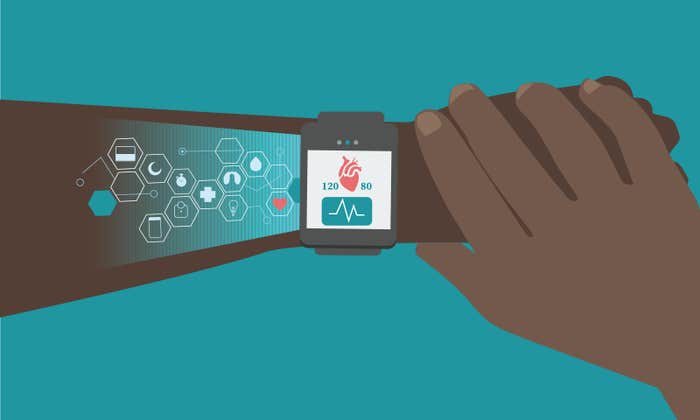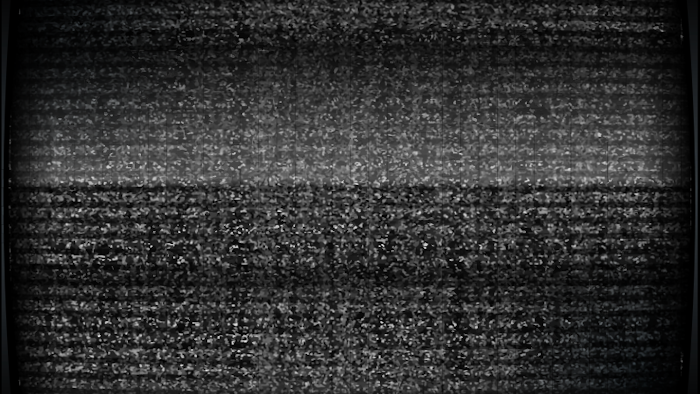Her mum frowns on it. Cancer experts once all warned against it. But these days you’ll find Vandana Verma, a 29-year-old secretary in Melbourne, Australia, sitting outside at lunch wearing no hat, no sunscreen, her arms and legs exposed because her doctor told her to. Her physician prescribed daily sunshine (along with vitamin D supplements) after a blood test in her first trimester came back highly deficient for vitamin D, the crucial hormone that the body creates when ultraviolet (UV) light hits the skin. “I was told if it didn’t improve, it would affect mine and my baby’s bones,” says Verma.

This winter—June and July in Australia—the Cancer Council Australia is urging many people to dump the sunscreen and hat to catch some rays, after years spent advising the opposite. The about-face—exposing both sides of the body is advised—especially targets darker residents like Verma and those who live in seasonally low-light southern cities including Adelaide, Sydney, and Melbourne, where the UV index averages below 3 in their coldest months.1 Regional alerts will remind schools that children should remove their legionnaires-style hats that are required the rest of the year. One public service posting from the partially government-supported SunSmart program on Facebook even shows a shirtless, pasty white man with arms outstretched, soaking up golden rays. The image would appall United States dermatologists, today expanding their campaign against any unprotected exposure to the sun.
Australia has the highest melanoma rate on Earth, which motivated the nation’s famed Slip! Slop! Slap! campaign. Launched in 1980, it advised Australians to slip on a shirt, slop on the sunscreen, and slap on a hat. The slogan promoted by Sid the Seagull—Australia’s equivalent of Smokey the Bear—was created to battle skyrocketing skin cancer. The southern hemisphere tilts toward the sun in Australian summer, so the sun beats down more directly below the equator than above. It is a harsh fit for the pale, blonde and redheaded English, Irish, and Welsh immigrants and their descendants who settled on this continent far from the penumbra of their ancestral lands.
People regularly exposed to daily sun have a lower risk of getting melanoma and also have a higher survival rate if they do.
Today, some 70 percent of Australians will develop skin cancer, including basal cell and squamous cell carcinomas—the less dangerous variety of skin lesions that mostly appear on sun-exposed body parts such as the face, neck, and hands. The scabby, pearly, rough-edged bumps, indents, and patches are rarely deadly if treated in a timely manner. Though also mostly curable if caught early—but deadly if not—malignant melanoma often morphs from moles or even a small dot, then metastasizes to other organs, like the lung and brain. Obituaries for young people are a regular feature of Australian newspapers—melanoma will afflict 1 in 18 Australians before they reach age 85. That’s more than double America’s rate.
But the melanoma capital of the world is welcoming back the sun after a half-century on the outs. The move follows a new understanding of skin cancer and vitamin D. By the early 2000s, research began to suggest a link between vitamin D and lower disease rates for cancers including breast, prostate, and non-Hodgkin’s lymphoma, along with autoimmune diseases such as multiple sclerosis.1 The need for sun especially affects darkly colored people since the skin pigment melanin, which protects against damaging ultraviolet solar radiation, also slows vitamin D production. Vitamin D deficiencies leach calcium from muscles and bones, causing pain, weakness, fractures, osteoporosis, and osteomalacia. Called rickets in babies and children, the bone-deforming illness not seen since Victorian times began cropping up from Britain to Australia—and the U.S. too—in darker populations, many of them recent migrants from equatorial zones.

At the same time, new research on who gets melanoma and why began changing beliefs about the sun. In 2003, a landmark eight-year study of 106,379 Scandinavian women published in the (American) Journal of the National Cancer Institute by an international team linked melanoma to sunburns (not tanning), blonde or red hair, and numbers of moles on the legs.2 A second article in the Journal of the National Cancer Institute solidified what had long been reported, but not quite believed: People regularly exposed to daily sun have a lower risk of getting melanoma and also have a higher survival rate if they do3 because regular sun exposure protects against burning, a finding later confirmed by a landmark 2008 World Health Organization (WHO) International Agency for Research on Cancer report.4
This is the outdoor worker effect, when a chronic tan naturally waxes and wanes with the sun, growing darker with summer as the UV index intensifies, then fading with winter light.5 In the ancient pattern of life, human appearance would track the seasons, as it does for other animals, like the bear and its winter coat. The modern indoor worker—especially in wealthier classes—grows pale inside offices, homes, and malls, then plunges into irregular bouts of excessive sunlight on beach vacations or long weekends. This sudden, intense, intermittent pattern of sun exposure heightens melanoma risk, says Bruce Armstrong, internationally-known Australian epidemiologist and former Deputy Director of the International Agency for Research on Cancer, a co-author on the landmark sunburn and melanoma research.
So in the “sunburnt” country, the public began accusing Slip, Slop, Slap mania with going overboard, based on prominent media coverage of the latest skin cancer and vitamin D findings. In 2004, Craig Sinclair, then director of the Cancer Prevention Centre at Cancer Council Victoria, called a meeting of the country’s health and medical leaders to revise sun exposure guidelines. As a result, medical doctors and cancer authorities in Australia, New Zealand, and later Britain adopted nuanced new policies based on skin color and the sun’s strength at different times of the year. Verma, too, used to slip on a shirt, slop on the sunscreen, and slap on a hat to protect her luminous olive complexion prized for its relative pallor in her native India—now she is following the new guidelines to get several hours of sun a week all year and ditch protection altogether in Melbourne’s winter.
“We’re very active telling people when not to use protection” in winter, says Sinclair, who also heads WHO’s Collaborative Centre for UV Radiation and has published research on the revamped Australian policy in the journal Progress in Biophysics and Molecular Biology. Then he adds, “This is certainly unusual compared to the U.S.”
At the time that these Commonwealth nations were revising sun recommendations, the U.S. proceeded in the opposite direction. In 2004, when pioneering vitamin D researcher Michael Holick advised five to 10 minutes of direct sunshine two to three times per week in his book, The UV Advantage: The Medical Breakthrough That Shows How to Harness the Power of the Sun for Your Health, it cost him his position at the dermatology department of Boston University School of Medicine. As a graduate student back in the 1970s, Holick helped identify and isolate the circulating form of vitamin D, called 25-hydroxyvitamin D3, which varies with intake before being processed in the kidneys into an active hormone, which he also identified. He found that the darkest skin takes six to 10 times longer than the lightest skin to create the same quantity of vitamin D.
Boston University School of Medicine dermatology chair Barbara Gilchrest asked Holick to either retract his recommendation for daily sunlight and controlled use of tanning bed artificial UV lights, or resign. He stepped down, while retaining his primary professorship in medicine, physiology, and biophysics. Dubbed Doctor Sunshine in the ensuing media fracas, Holick still advocates a few minutes of direct sun a day as a “totally meaningless” danger for even the palest people—although he does wear sunscreen on his face in summer for longer outdoor activities like tennis.
“We’re very active telling people when not to use protection” in winter, says Sinclair. “This is certainly unusual compared to the U.S.”
So who is right—the Yankees or the Aussies and Brits? The answer lies in the details of how ultraviolet radiation works on the body. How the sun affects you depends on your complexion, the shade of which is determined by melanin, a pigment derived from amino acids older than life on earth. The anti-oxidizing molecule is so versatile at protecting and repairing DNA from UV solar radiation that creatures from humans to fungi deploy it in diverse ways, creating what is, in effect, nature’s box of crayons.
Rising up inside the epidermis, the melanin sits atop cellular DNA like tiny umbrellas pointed one way—out to shield from incoming rays. And here’s the hitch—the same ultraviolet wavelengths in the 290 to 400 nanometers range that trigger melanin production also spark vitamin D creation. You cannot make one without the other. Humans evolved to produce two kinds of melanin as they fanned out from the equator into lower light zones. The MC1R gene6 determines the type of melanin the body produces. In the mid-zone such as the Mediterranean region, people developed the ability to tan deeply and lighten, tracking what can be dramatic shifts from winter to summer. They produce eumelanin, the pigment responsible for brown or black hair and for dark skin that tans easily. To survive in far northern Europe, humans paled, adapting to lower light and changing seasons with a different type of melanin, called pheomelanin, associated with fair skin and blonde and red hair with minimal protective value, but allowing more UV to penetrate to make vitamin D. The exterior of an Irish lass with her porcelain complexion would be rated a sun protection factor, or SPF, about 10 times lower than a sub-Saharan African. If she had red hair and freckles, linked to the MC1R gene, then she’d have a much higher risk of UV-related melanoma in sunnier regions. “People’s skin adapted to the place where they live,” says Nina Jablonski, distinguished professor of anthropology at Pennsylvania State University and author of Living Color: The Biological and Social Meaning of Skin Color.
Her research, cited in the landmark 2008 WHO report on vitamin D and cancer, used NASA satellite maps to show how gradients of skin color from darkest at the equator to lightest at the poles correlates with solar strength from zero to 90 degrees latitude. “We evolved under the sun,” she says. “Our pattern of lack of sun exposure as a result of being indoors—even the concept of being indoors—is a recent concept in our history.”

But in the U.S., the American Academy of Dermatology, representing 17,000 skin specialists, is issuing recommendations that do not take skin color into account. Earlier this year, leading ethnic dermatologists—an industry term used to describe dermatologists focusing on people with darker skin—published an article in the academy journal titled “Skin cancer and photoprotection in people of color: A review and recommendations for physicians and the public.”7 Promoted at the academy’s 2014 meeting in Denver, the article advises all “people of color,” even the darkest, to seek the shade and wear sunscreen, then take supplements to make up for any vitamin D shortfall. Recommendations like these have a direct effect on national healthcare policy. The academy sets medical guidelines for U.S. skin doctors, who influence policy through national organizations ranging from the Skin Cancer Foundation to the American Cancer Society and the U.S. Surgeon General. “They’re extremely influential,” says Holick.
While the Academy of Dermatology declines to tailor its recommendations by skin color, the data reveal very different realities for different races. For example, the academy often emphasizes that skin cancer is on the rise. There has indeed been a 17 percent jump in melanoma rates for Caucasians, from 22.9 to 26.8 cases in 100,000 people, between the years 2000 and 2010. But the incidence for African Americans has not changed over this same time period, flatlining at 1 case in 100,000—26 times lower, according to the U.S. CDC National Cancer Registry. Melanoma is mostly a white person’s disease affecting “Caucasian populations residing in highly resourced, westernized countries,” according to a World Health Organization 2012 report. In the U.S., melanoma is the sixth most common cancer for Caucasians, but does not make the top 10 for African Americans.
When black people do get melanoma, it is often more deadly, in part because of later detection related to lack of awareness, less visible lesions, unequal health care access, and possibly distinct carcinoma biology, says Ophelia E. Dadzie, M.D., a British-Ghanaian dermatologist and dermatopathologist, and co-editor of the textbook Ethnic Dermatology: Principles and Practice. Yet it is also often a different kind of melanoma, called acral lentiginous or subungual, which typically appears on the soles of the feet, and in finger and toe nail beds—parts of the body not exposed to the sun. “It may have nothing to do with sun exposure at all, but we can’t say that’s the case based on limited studies that have been done,” says Armstrong, the Australian epidemiologist.
The same ultraviolet wavelengths that trigger melanin production also spark vitamin D creation. You cannot make one without the other.
The American Academy of Dermatology’s article about skin cancer and photoprotection acknowledges that for “blacks and Asians, UV radiation does not appear to be a major risk factor” in malignant melanoma. It also states the effectiveness and impact of sunscreen for black people is unknown since SPF sunscreens are tested only on light-skinned people. But the report goes on to recommend sunscreen for all people of color regardless of skin shade. For Henry W. Lim, M.D., a leader of the Skin Cancer Foundation’s photobiology committee and chair of the Henry Ford Hospital dermatology department in Detroit, the missing information is irrelevant. “We don’t need data on that,” he said, because supplements would treat any D-shortfall, whatever that might be. “We want to make it simple as a public health message—as to what the public should reasonably be able to absorb and understand,” says Lim. “To fine tune it is just too complicated we feel.”
The Skin Cancer Foundation echoes the American Academy of Dermatology in its colorblind sun protection advice. That blanket sunscreen recommendation incenses anthropologist Jablonski, who signed on to a letter to the academy’s journal editor decrying unscientific conclusions and conflicts of interest from cosmetic company influence. Stated conflicts of interest in the photoprotection academy article include one of the study authors, Susan Taylor, M.D., who sits on the advisory boards of several corporations including Unilever, and founded a skincare line called “RX for Brown Skin,” involving specialized sunblock. According to market research firm Euromonitor Inc., “ethnic” consumers are the subject of new products and marketing by the $8.2 billion global sunscreen industry.
“It’s scientific issues mixed with the race card,” says Jablonski. “Americans have a serious problem with skin color. When you think of the history of slavery in the United States, that is the problem,” she says. “So many doctors feel extremely uncomfortable talking about it. What they see in skin color is a social barrier, not a physical phenomenon.” Robert Gagel, president of the National Osteoporosis Foundation and internal medicine and endocrinology professor at The University of Texas MD Anderson Cancer Center in Houston, says that bone, muscle, and hormone physicians may often privately advise controlled sunlight to patients, but decline to officially say so in published clinical guidelines. “We choose not to provoke a ‘fight’ over this issue,” says Gagel. “Rather than fighting a battle that we probably can’t win we’ve focused on vitamin D supplements.”
In fact, says Gilchrest of Boston University School of Medicine, the American Academy of Dermatology has debated, but rejected adjusting its universal no-sun stance. “They don’t like to have recommendations that target one racial group or another,” says Gilchrest, who is also the editor of the Journal of Investigative Dermatology. “They like to have one single recommendation for fear of insulting someone, I guess.” She was unaware that Australia, which she described as a world leader on sun research, revamped their policy nearly a decade ago. In the U.S., she says, the skin color topic is “such a can of worms.”
“There wasn’t and there still isn’t absolute evidence” that supplements are bioequivalent to sunshine.
But down under, osteoporosis doctors, dermatologists, and national cancer leaders dealt with it, unanimously signing off on their “Risks and Benefits of Sun Exposure Position Statement” in 2005, later updated in 2007. The policy refers to the Fitzpatrick Scale of skin color, which ranks skin color from lightest to darkest on a scale of 1 to 6. The scale was devised by Harvard dermatologist Thomas Fitzpatrick in 1975. Type 1 is “very fair, pale white skin that always burns, never tans,” meaning Northern European. Type 6 is “deeply pigmented, dark brown to black skin that never burns,” meaning sub-Saharan Africans, such as Nigerians. As the Australians state, darker people, Fitzpatrick 5 and 6 types, need more sun and are “relatively protected from skin cancer by the pigment of their skin.”
Australian experts recommend vitamin D pills only for at-risk groups, such as darker-skinned people, pregnant women, babies of deficient mothers, the institutionalized, and the elderly. “There wasn’t and there still isn’t absolute evidence” that supplements are bioequivalent to sunshine, says Stephen Shumack, M.D., president of the Australasian College of Dermatologists. “We’ve always been pragmatic in Australia,” he says. “The pragmatism leads us away from the one size fits all.” Sun exposure, instead, can be considered as another facet of the emerging practice of personalized medicine. There are even apps emerging to help the public tailor their own exposure. With 100,000 users, the official Cancer Council Victoria’s mobile program, SunSmart, tracks UV exposure and vitamin D intake. There’s an American app, too, called DMinder, created by Californian entrepreneur Rob Williams of Ontometrics.
For Dadzie, the sun is a personal issue. She lives in foggy London at a latitude of 50 degrees north. Though vitamin D deficiencies plague her dark-skinned patients, she never made the connection to her own low energy and sharp pains in her feet and hands until her office nurse suggested a blood test, which revealed extremely deficient vitamin D levels. Raised the daughter of a Ghanaian United Nations official, she grew up in Africa never thinking about her skin color or the ubiquitous sun. No one there wears sunscreen, yet skin cancers are rare, she explains. “Your mum will say to you the sun is really strong now, go into the shade. It’s sensible. They’re not deliberately tanning themselves. They’re just being careful,” says Dadzie, who was the lead author on the critical letter to the academy journal. Since all things western—and especially American—are so admired back in Africa, she worries that the American Academy of Dermatology message might influence Africans. Her advice to people of all colors is simple: “Get to know your skin type.”
Jessica Seigel is an award-winning journalist, New York University adjunct journalism professor, and former Chicago Tribune national correspondent. Her work has appeared in The New York Times, National Public Radio, Salon, and other publications. @Jessicaseagull
References
1. van der Rheea, H., Coeberghb, J.W., de Vries, E. Is prevention of cancer by sun exposure more than just the effect of vitamin D? A systematic review of epidemiological studies. European Journal of Cancer 49, 1422–1436 (2013).
2. Bragelien Veierød, M., et al. A prospective study of pigmentation, sun exposure, and risk of cutaneous malignant melanoma in women. Journal of the National Cancer Institute 95, 1530-1538 (2003).
3. Berwick, M., et al. Sun Exposure and Mortality From Melanoma. Journal of the National Cancer Institute 97, 195-199 (2004).
4. Boyle, P. & Lyon, B.L. (editors) World Cancer Report 2008, World Health Organization: International Agency for Research on Cancer, Lyon, France (2008).
5. Gandini, S. et al. Meta-analysis of risk factors for cutaneous melanoma: II. Sun exposure. European Journal of Cancer 41, 45-60 (2005).
6. Genetics Home Reference: MC1R http://ghr.nlm.nih.gov/gene/MC1R (2007).
7. Agbai, O.N. et al. Skin cancer and photoprotection in people of color: A review and recommendations for physicians and the public. Journal of the American Academy of Dermatology 70, 748-762 (2014).
Editor’s note:
On June 13th, 2014, Nautilus received this letter from the President of the American Academy of Dermatology, Dr. Brett Coldiron, which expressed concerns about how this article represented the science of UV radiation and cancer. After considering his letter carefully, and consulting with the article’s author, Jessica Seigel, we decided that no changes to the article’s description of the science were necessary, and wrote and sent this reply to Dr. Coldiron.
Also, the version of this story that was originally published contained certain errors due to our editorial process. These related to the Cancer Council Victoria’s guidance regarding sun exposure in the summer; the American Cancer Society’s name; the times per week that Michael Holick recommended direct sun exposure; and Bruce Armstrong’s view of the role of sunburn in the outdoor worker effect. The errors have now been corrected.



















